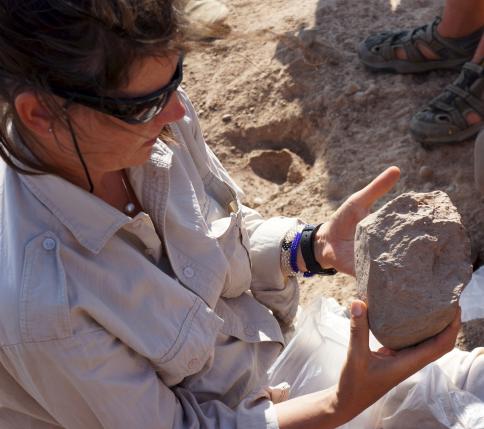
Our ancient ancestors made stone tools, a milestone achievement along the path of human progress, much earlier than previously thought and far before the appearance of the first known member of our genus Homo.
Scientists on Wednesday announced the discovery of 3.3-million-year-old stone tools in desert badlands near Lake Turkana in northwestern Kenya, including sharp-edged flakes that could have been used for cutting meat from animal carcasses and rudimentary hammers perhaps used to pound open nuts or tubers.
They are 700,000 years older than any other such stone tools ever found and predate by 500,000 years the earliest-known fossils of the genus Homo, meaning they likely were fashioned by a more primitive species on the human family tree.
"The transition from only using natural organic tools, like chimps do, to intentionally creating a specific tool from stone represents an advance in cognitive ability in our ancestors," said archaeologist Sonia Harmand of the Turkana Basin Institute at Stony Brook University in New York.
Our species, Homo sapiens, appeared roughly 200,000 years ago. The earliest-known members of the genus Homo date to 2.8 million years ago. A variety of more ape-like human ancestors preceded them.
It had long been presumed that stone tool-making was a hallmark of our genus. This discovery suggests it was the more ancient human ancestors who made the cognitive leap needed for crafting such implements.
Turkana Basin Institute paleoanthropologist Jason Lewis said it remains unclear who made the tools. He listed three possibilities: Kenyanthropus platyops and Australopithecus afarensis, species that combine ape-like and human-like traits; or an as-yet undiscovered early member of Homo.
Fossils of Kenyanthropus platyops, known for its flat face, have been found near the tool site. Australopithecus afarensis is the species that includes the famous "Lucy" fossil found in Ethiopia in 1974.
Geologist Chris Lepre of Columbia University's Lamont-Doherty Earth Observatory, who determined the tools' age, said the discovery suggests such implements came into use before the evolution of large brains in the human lineage.
The tools, made from volcanic rock, include sharp-edged flakes of various sizes, the rocks from which these flakes were struck, larger rectangular blocks that served as anvils and smaller, harder stones that served as hammers.
They were made in a process called knapping, breaking off pieces with hard strikes from another stone; 149 stone artifacts were detailed in the research published in the journal Nature, with more still being recovered.

 Previous page
Previous page Back to top
Back to top







